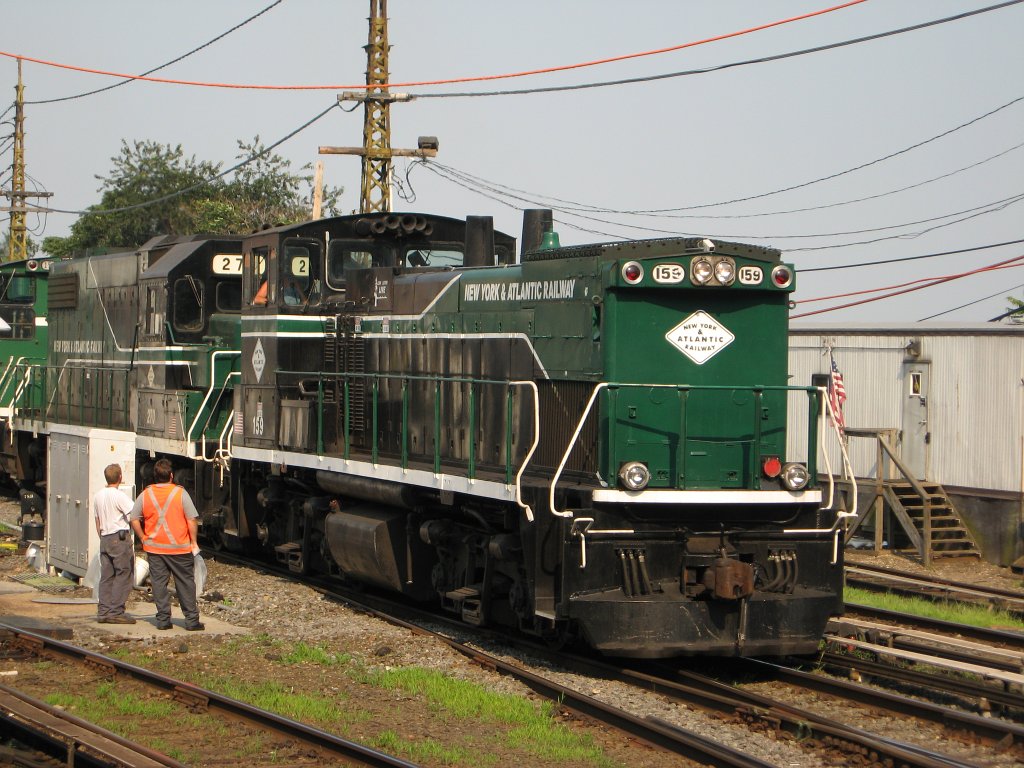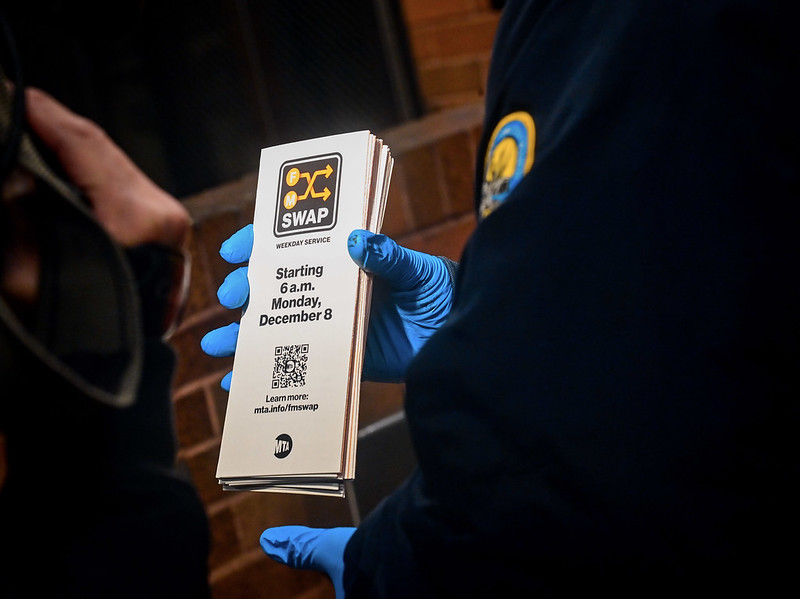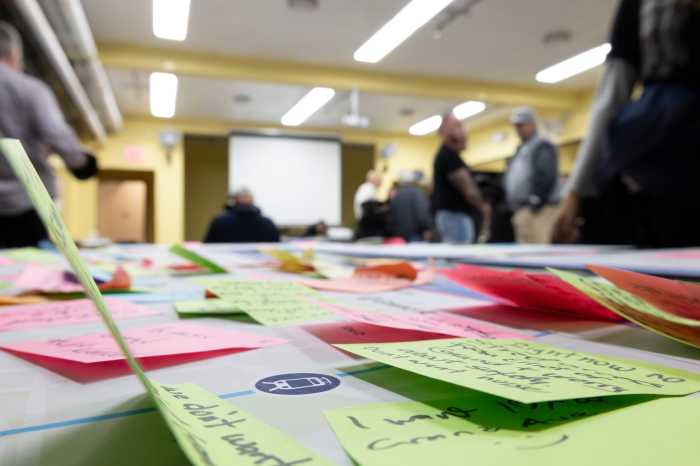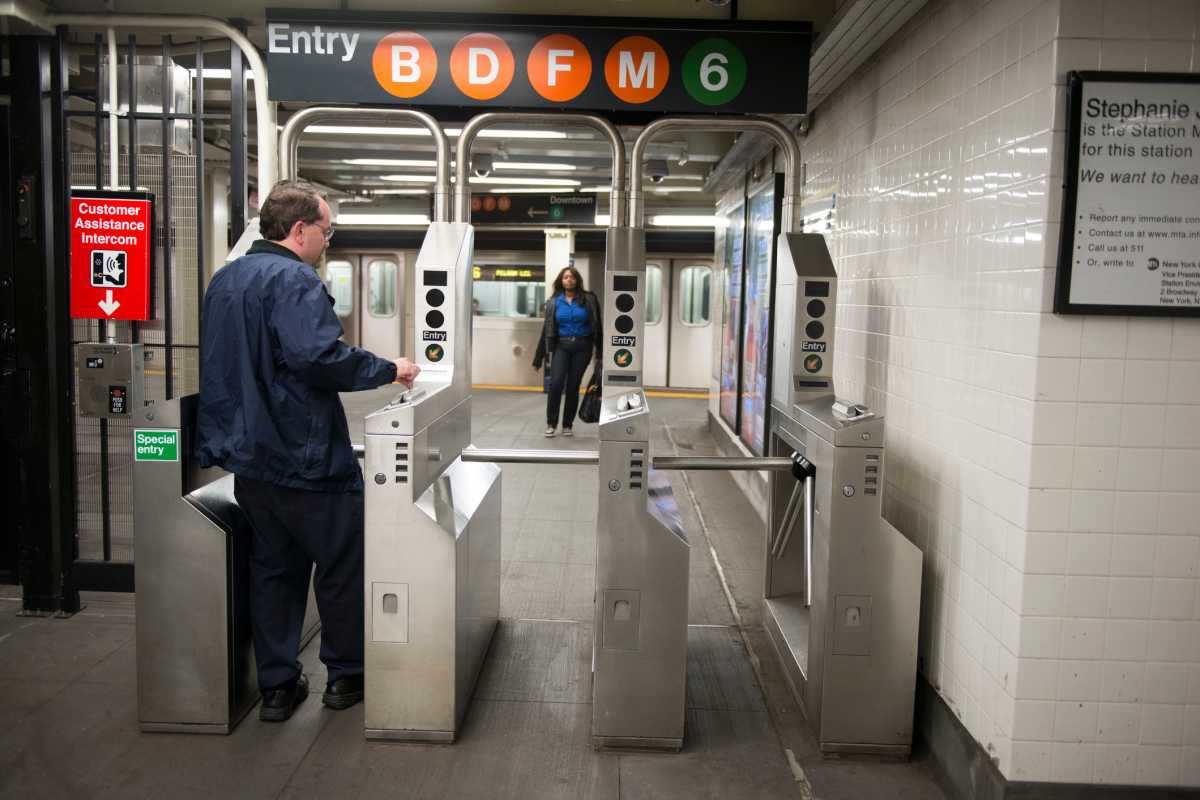Building a Cross Harbor Tunnel would shift the tri-state area’s traffic problems into Brooklyn and Queens, members of the Community Board 5 (CB 5) Transportation and Public Transit committees declared during a meeting Tuesday night in Glendale.
Panelists panned options in the Port Authority’s Cross Harbor Freight Program that call for a train tunnel or a combined train/truck tube through the harbor between rail yards in New Jersey and Bay Ridge, Brooklyn. The options include increased activity on the Long Island Rail Road’s Bay Ridge line and the connecting Fresh Pond Rail Yard in Glendale — the only freight rail terminal linking geographic Long Island and the rest of the country.
Though the Port Authority claims the tunnel plans would help reduce tractor-trailer traffic on its existing Hudson River and harbor crossings, CB 5 Chairperson Vincent Arcuri charged, the proposal wouldn’t remedy congestion, but rather move it elsewhere in the city.
According to Arcuri, the tunnel plans included the creation or expansion of intermodal shipping facilities and warehouses near the Fresh Pond Rail Yard as well as Maspeth and East New York. At these sites, goods would be loaded and off-loaded between train cars and small trucks. Citing analysis performed by the Glendale-based Civics United for Railroad and Environmental Solutions (CURES), Arcuri said, the tunnels would effectively add hundreds of truck trips each day onto local streets.
“By taking the largest tractor-trailers off the road and putting [their cargo] on the trains, they’re adding thousands of smaller trucks to our area,” he said. “We need to come up with a comprehensive argument against this current plan.”
John Maier, Public Transit Committee co-chair, echoed those sentiments, noting that much of the tunnel program’s concepts are based in “theory.” Municipal waste and construction and demolition debris from the city and Nassau and Suffolk counties make up the bulk of all local freight rail shipments. Other goods, he noted, are largely shipped by truck.
“The tunnel would do more to alleviate traffic outside of New York City than within it,” Maier said. “It’s not creating a lot of jobs because a lot of [shipping] is automated. It’s not a lot of yard jobs. It’s not a lot of anything, really. It would only reduce 6 percent of traffic on the Hudson River crossings while adding much more than 6 percent of traffic to East New York and Maspeth.”
Jean Tanler of the Maspeth Industrial Business Association stated that companies in the neighborhood’s Industrial Business Zone (IBZ) expressed similar concerns about a Cross Harbor Tunnel, but also pressed for easier shipping methods to reduce costs and travel time.
“There’s definitely demand,” she said. “It would save companies a lot of money to shave off a day of transit, either by rail or by barge.”
Local logistics also make a Cross Harbor Tunnel plan unfeasible, according to CB 5 District Manager Gary Giordano. The plans indicate a tunnel would bring between 16 and 21 trains through the area each day — and current freight rail facilities are already overwhelmed with traffic.
“Right there, it’s physically impossible to pull that off unless the trains just rolled through at all hours of the day,” Giordano said.
Arcuri concluded that “the current plan is unacceptable” and that the board needed to present a resolution not only dismissing the Cross Harbor Tunnel, but also advocating for increased barge shipments and container float operations across the harbor. The chairperson said a resolution will be developed and considered at the committees’ next meeting on Tuesday, March 24.
Meanwhile, Queens residents will have the opportunity to speak out on the Cross Harbor program during a public hearing on Tuesday, March 3, from 4 to 8 p.m. at Queens Borough Hall, located at 120-55 Queens Blvd. in Kew Gardens.
RECOMMENDED STORIES




































